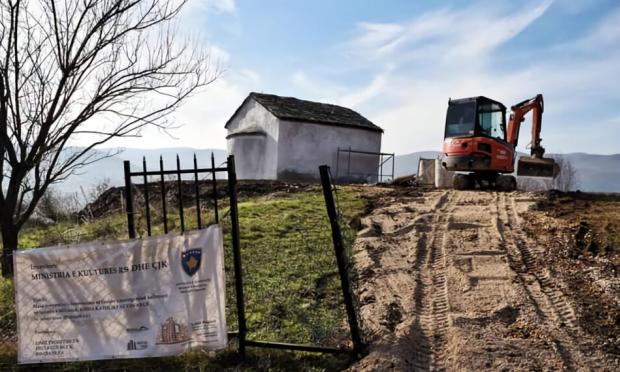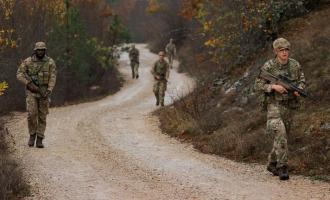In another aggressive move against the Serbian Orthodox population in Kosovo, the authorities declared a 600-year-old Serbian Orthodox church "Catholic".
In addition, the Kosovo Ministry of Culture has started on its own initiative the reconstruction of the allegedly Catholic church, the church of the cemetery in the village of Gornje Vinarce, without consulting the authorities of the Diocese of Raska and Prizren of the Serbian Orthodox Church, the diocese said.
"Apart from not contacting the S.O.E. about the reconstruction, the ministry took another step by declaring this church 'Catholic', with the clear intention of taking over the heritage of the Serbian Orthodox Church," the Church said.
According to newsfire.gr, the church has been registered as a protected monument by the Ministry of Culture since 2016 and has now hired two companies to carry out restoration work on the "Catholic" church.
The diocese expresses its strongest protest against this procedure, which obviously shows the clear intention of the Kosovo authorities to "reconstruct" churches that were demolished or damaged by Albanian extremists without any consultation with the Church to which these sacred places belong and to completely change their identity, despite the existing historical evidence and the number of churches located in Kosovo.
The Church authorities also indicate that they will inform international organisations and representatives dealing with religious rights.
Of course, the Serbian Church is not opposed to the reconstruction of its churches, as it says, but to the way they are being used "as a pretext for taking over the cultural and religious heritage of the Serbian Orthodox Church and changing the identity for the sake of historical revisionism".
The diocese provides the history of the church:
For the information of the public, this Orthodox church has existed since the 14th century in a village that was then purely Serbian, with 15 Serbian households, as recorded in an Ottoman census by Isa-beg Ishaković in 1455, shortly after Kosovo's conquest of the region. A document published by the Eastern Institute in Sarajevo in 1964, with other Ottoman censuses of the time, shows the demographics of that period. The census mentions vineyards (vinari in Serbian means winegrowers) in this village, which is apparently where it got its name. The architectural structure of the church clearly shows that it resembles a 14th-15th century cemetery, with an arch for the altar and a niche for the votive offering, typical of the Orthodox Christian tradition. There is no mention of any Roman Catholic community in the village and, as far as the Raška-Prizren diocese is aware, the Roman Catholic diocese has never used this church, nor does it have any written evidence or material proof of its ownership in history.
Until 1999, the church was regularly used by Serbian Orthodox believers who gathered here on the first Friday after Easter, as the church was dedicated to the "Life-Giving Fountain", a fact further evidenced by a nearby spring and cistern. After the expulsion of the Serbian population in 1999, the church in Gornje Vinarce was desecrated, burnt, covered with graffiti and the doors of its entrance were broken. Unfortunately, this is the situation of many SOC churches that were damaged or destroyed by Albanian extremists in Kosovo during the 1998-1999 war. This is further evidence that the church was considered Serbian by the local Albanian population, otherwise it would not have been desecrated and burnt, as is the case with many other churches and monasteries that were attacked and are now (paradoxically) being declared "Albanian churches" in the media or through the Ministry in Pristina.
According to earlier records from the archives of the Raška-Prizren Diocese, during the communist Yugoslav period, the church was attacked and destroyed in 1972 when a group of local Albanian villagers broke the doors and windows and demolished the interior of the church, trying to set it on fire.




